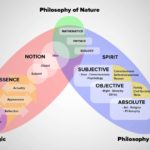I first heard about Saramago in the early 1990s but only managed to read him a few years later, before the end of the Millennium. I went for O Evangelho segundo Jesus Cristo which was originally published in 1991 and had created quite a stir, particularly with the Catholic Church. This in itself increased my interest on the Portuguese writer.
I purchased the 1998 (the year he won the Nobel Prize) Spanish edition of the book, published in México. After a few weeks of not being able to finding the time, I was finally able to sit for a few hours and launch my reading adventure. The very first page of the novel is a reproduction of the crucifixion of Jesus Christ which, perhaps unlike others, is very busy and rich with a wide variety of details. The text then starts to describe the contents of the reproduction moving in a circular fashion, starting at the upper left corner down and finishing with a detailed account of a tiny human figure on the center-right of the picture. I spent quite some time in these very few pages as I was going back and forth between text and picture.
I was amazed at Saramago’s ability to describe so much with so little text while, at the same time, being able to add in the process the complete historical context along with his personal take. As I eagerly moved on with my reading, I soon found the unique way in which Saramago presents the dialog among his characters. No full stops, just commas and upper case to indicate change of voice. Powerful indeed, as dialogs flow better in this fashion. This is complemented by his capacity to capture all local environment context is a seemingly simple and enjoyable manner. Every time I read a Saramago novel, I feel I actually have a film camera in my brain which places me and my lens right in the middle of the narrative, side by side with both his characters and historical context. Indeed, I am there!
Needless to say I fell in love with this writing style right away. I have since bought and read most of his books. The last one I devoured was Cain which, to a large extent, revisits the themes of O Evangelho but also revises religious history and, in doing so, plays with time travel.
In ant event, my favorite Saramago book is O Ano Da Morte de Ricardo Reis (1984) which I read right after finishing O Evangelho. A homage to the great Portuguese poet Fernando Pessoa, I was totally enchanted by this great work. Not only I read it twice but also did some research to square fact and fiction. Ricardo Reis, which was one of the several heteromyns Pessoa used for some of his writings, arrives back in Lisbon from Brazil one month after the dead of the Portuguese poet but continuously runs into him in a city that Pessoa himself has recreated for Reis. This is one of the most beautiful novels I have read and, in my mind, Saramago’s masterpiece.
Even though I have been following Saramago’s blog, for a few years now I never bother to click on the biography link on his web site. I did today, once I l learned of his passing, in the midst of m trying to follow one of the games of the 2010 World Cup in South Africa -where Pessoa spend most of his childhood and teenage years, living in Durban, before returning to Lisbon when he was 16.
I also discovered that Saramago shared one unexpected thing with me: birth dates -although he was born a few years before.






Comments
One response to “José Saramago”
Post Edited: José Saramago https://t.co/2PbmfXOTgM